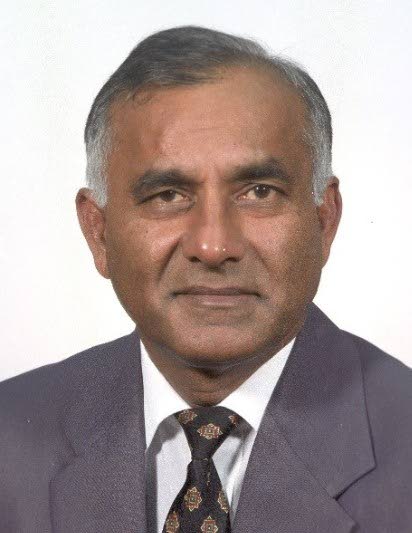Politics and Divali

TREVOR SUDAMA
IT MIGHT seem cynical to reflect with some candour on the just concluded Divali festival and the motivations behind superficial appearances and routine pontification in an environment of celebration, self-congratulation and visual spectacle. Yet, it is my firm view that a degree of cynicism is essential in order to be aware of the non-alignment between the outward manifestation of socio-political existence in this country and the underlying reality.
For some time now the political dimension of the celebrations has become increasingly apparent. Many politicians resort to donning elaborate ethnic wear and lighting deyas as a public display. Some participate in puja, all with the objective of avowing commitment to the embrace of this aspect of Hindu culture. The underlying objective, however, is to impress the Hindu voter.
Leading members of the two major parties use the occasion to publicise their otherwise forgotten Hindu heritage and sympathies as they seek to extract whatever political mileage can be derived from their posturing and pronouncements. This is understandably par for the course in the political landscape.
Leader of the UNC, Kamla Persad-Bissessar, intermittently of Baptist persuasion, regales herself in the trappings of ornate Indian finery and appropriates the aura of Goddess Lakshmi at the Divali ceremony at her constituency office in Penal. Her action is less imbued by religious fervour than by the need to consolidate the political support of the Hindu faithful, particularly the women folk. Appropriate media coverage is imperative.
Then there are frontline members of the PNM who seem to go overboard in flaunting their Hindu credentials because they wish to induct as many Hindus as possible into the PNM fold.
The photograph in a daily newspaper of two junior ministers, two senators and Minister of Works Rohan Sinanan with clasped hands posing for the cameras after a Divali event in Parliament was optically prominent. It was, I believe, meant to display religious piety or respectful salutation or both, despite one junior minister being confused by the distinction between light and darkness.
The message seemed to be that there are worthy Hindus who proudly support and are embraced by the PNM. In the process, the alleged virtues of the PNM had to be preached.
The pugnacious lady senator with impeccable make-up and attire extols the intellectual attraction of the PNM as being capable of inducing many bright and young Hindus and Indians generally who stand ready to represent it.
Meanwhile, Sinanan, five years ago, indirectly proclaimed that the PNM was the hallmark of honesty, integrity and probity by declaring that not all Indians are thieves but that the honest ones can be found only in the PNM. One can surmise that it is a case of self-serving exuberance or political genuflection.
The Divali Nagar, which stages a Bollywood-type spectacle of largely Indian dance routines for national viewing, provides a ready-made platform for politicians who are invited to address the audience on a nightly basis during the ten days or so schedule of events.
If this is merely a cultural and religious event and politicians are invited to attend and view the performances on display, why is there a need to request them to make speeches? This practice surely gives the Divali Nagar celebrations a political flavour. Most politicians invited to speak to a large captive audience would be prone to make overt or covert political statements or insinuations, or to otherwise enhance their political image and acceptability.
The recent picture of Prime Minister Rowley at the Divali Nagar posing with clasped hands and a discernible smirk in front of the human depiction of a Hindu deity is worth a thousand words of political commentary. In his speech, he made mention of increasing numbers sponsoring divisiveness and discord, glorifying hatred, and practising hypocrisy, from which, of course, he excluded himself.
It must be either naivete or obfuscation for the organisers to declare that the Divali Nagar is non-political and that they would not permit it to be used as a political football. At the same time, governing and other politicians are given the opportunity to mouth hypocritical platitudes about the virtues of cultural diversity, the vibrancy of Hindu culture, religious tolerance and acceptance, and social equality where every creed and race is deemed to have an equal place.
The reality is that Indian culture, or more so Hindu culture, is treated as a subculture and functions on the margins of state acceptance and support, including financial support. The few thousand dollars provided by the state to the Divali Nagar as against the tens of millions awarded to other cultural activities illustrate the point.
However, there is a larger problem which cannot be fully addressed in this letter, which relates to the dwindling number of Hindus in the population.
In the 2011 census, the Hindu proportion of the national population was around 18 per cent. Today it is much lower as Hindus continue to migrate in large numbers to the Pentecostal and other Christian churches. With fewer Hindus there are waning Divali celebrations and lighting of deyas among the households and communities in rural Trinidad, where Hindus largely reside.
There is a crisis of Hinduism in TT of which the organisers of Divali Nagar are either unaware or with which they are not concerned as they occupy themselves in organising a spectacle with commercial overtones for national viewing.

Comments
"Politics and Divali"